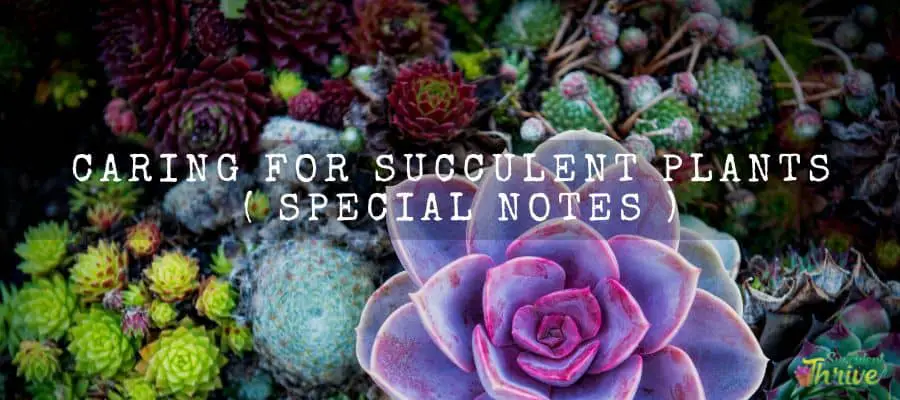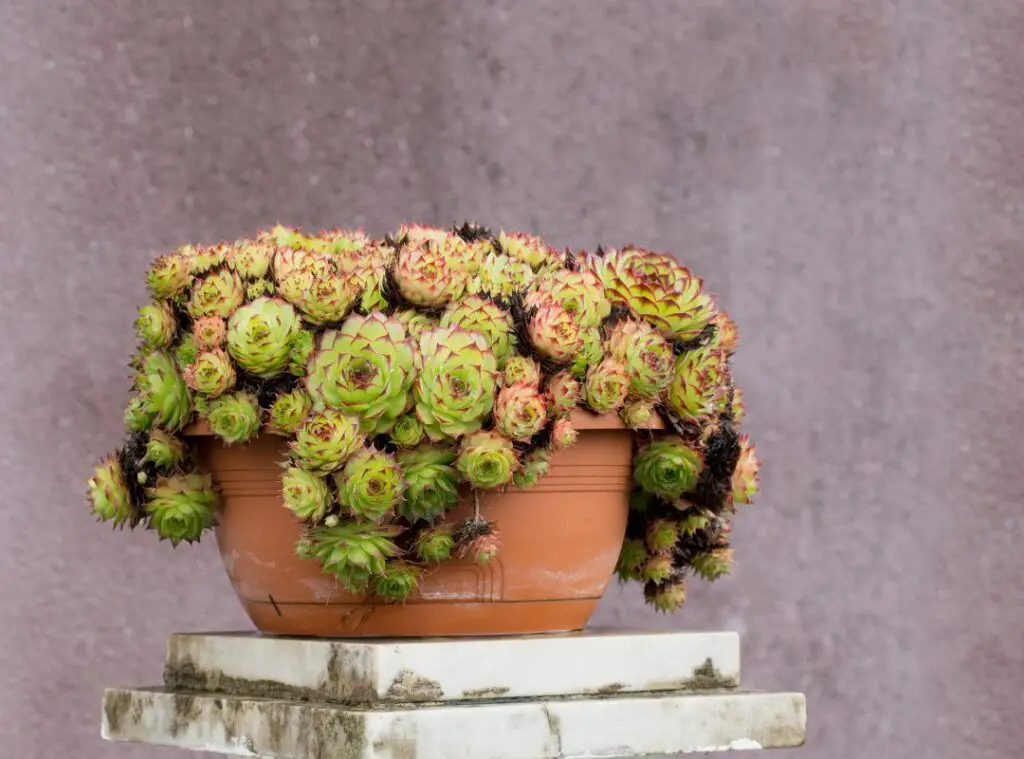Succulents are drought-resistant plants and therefore Caring For Succulent Plants is a easy task. As a adaptation to drought conditions water is stored in their leaves, stems, and roots. Since these areas of the plant are retaining water, they may appear fleshier and bloated.

Succulents are easy to care for. Because succulents have the ability to store water, they can live longer without water.
This property makes them suitable for use as indoor plants or as part of a low-maintenance garden in warmer climates. Then, the method of caring for indoor and outdoor plants changes.
Caring For Succulent Plants: indoor succulents
Because succulents have the ability to store water, they can survive in warm, dry climates. As a result, they’re well-suited to indoor growth and are suitable for those looking for low-maintenance houseplants.
But, every species of succulents cannot grow indoors. Species that prefer to grow in shady or low light conditions should be selected.
Choose a succulent that is suitable for an indoor setting.
The majority of succulents prefer direct sunlight. However, succulents that prefer bright sunlight do not grow well in an indoor setting. As a result, species that survive in shady or low-light environments should be selected.
Provide a potting medium that drains well.
You should select a soil that is excessively rich and holds a lot of moisture. So, you will want to report your succulents as soon as you bring them home.
Coarse potting mix can be used as a starting soil mixture that t is well drained and aerated. You may choose succulent mixes and Perlite should be added to the soil mix to increase drainage and avoid compaction.
Choose a container
When repotting, choose a container with a drainage hole at least 1 to 2 inches wider than the nursery container.
Glass containers cannot be used for long-term potting because they do not allow roots to breathe which can lead to root rot.
Lighting
It is difficult for succulents to get enough sunlight when they are kept indoors. If you are growing succulents indoors, make sure they are by a window that gets more than enough light during the day. If this is not possible, put your succulents near your home’s brightest place.
Watering
Over watering is the huge problem as we talk about watering to succulents. Due to this problem root rot can happen.
Therefore, you should be careful to avoid over watering. It is preferable to water more often but less frequently. Saturate the potting mix completely, but allow it to dry slightly before watering again.
Fertilizing
Fertilizing should be done at least one time per year. you can use a balanced, all-purpose, water-soluble fertilizer that has been diluted to half the strength recommended on the package.
In the spring and late summer, fertilizer is most useful to the plants. Succulents do not need fertilization during the winter because they are semi-dormant and therefore not aggressively growing.
Pest controlling
Bugs are normally not a concern if you keep your succulents as indoor houseplants in good condition. However, if you buy a plant that already has bugs, they will quickly become a major issue.
Gnats are a popular insect. Gnats can usually only appear if the soil is too wet. Gnats can usually be avoided if you use a well-draining soil mix and let the soil dry out between watering.
Mealy bugs are another bug that appears often. They are mean little white guys who cling to your succulents like a lifeline.
If mealy bugs do appear, spray them with rubbing alcohol and pour the alcohol over the soil to remove any eggs they have laid.

Caring For Succulent Plants: outdoor succulents
Though growing succulents indoors is often a choice, they thrive when they are outdoors. They do well outside because they have access to fresh air, ventilation, and sunlight.
Lighting
The majority of succulents like to be in the sunlight. They need about 6 hours of bright, indirect sunlight a day while they are outside.
Soil
Growing succulents would not require the use of any particular fertilizer. In reality, they can thrive in almost any outdoor soil, with the exception of clay-like or compacted soils.
But, if you can choose a soil that is very high in nutrients and retains a lot of moisture, it is better for the growth of the plant. If necessary, backfill the hole with sand or gravel to improve drainage. Many succulents can rot if they aren’t planted in the right kind of soil.
Watering
Succulents grown outside will get more sunlight and their soil will dry out faster. because of that, requiring more water than succulents grown indoors. On the other hand, to keep the leaves dry, pour water directly onto the plant’s base.
Over watering is the huge problem as we talk about watering to succulents. Due to this problem root rot can happen.
Therefore, you should be careful to avoid over watering. It is preferable to water more often but less frequently. Completely saturate the potting mix, then let it dry somewhat before watering again.
Bring your succulents inside during winter
Many of these succulent plants have a hard time surviving in the winter. If you live in a cold climate, you can safely transplant your plants into a container for indoor storage.
Succulents are a low-maintenance plant that thrives when provided minimal care and water.
Overwatering, bad soil, poor drainage, lack of lighting, sun burning and watering with spray bottles can be reasons for the health problems of the succulents. So, you should pay attention to these listed points when caring for the succulents.
Read Next : Can I Plant Succulents Outside? (It is Super Easy)
